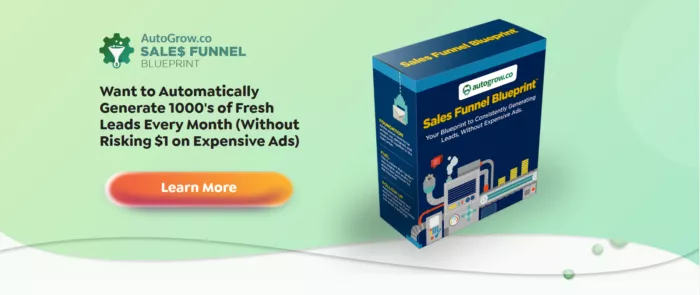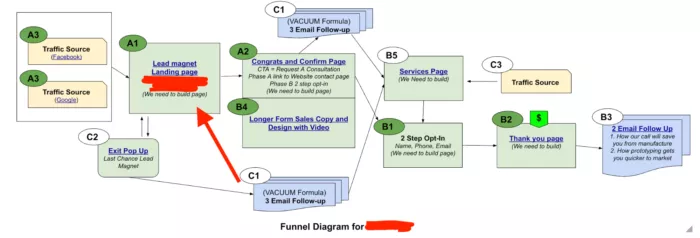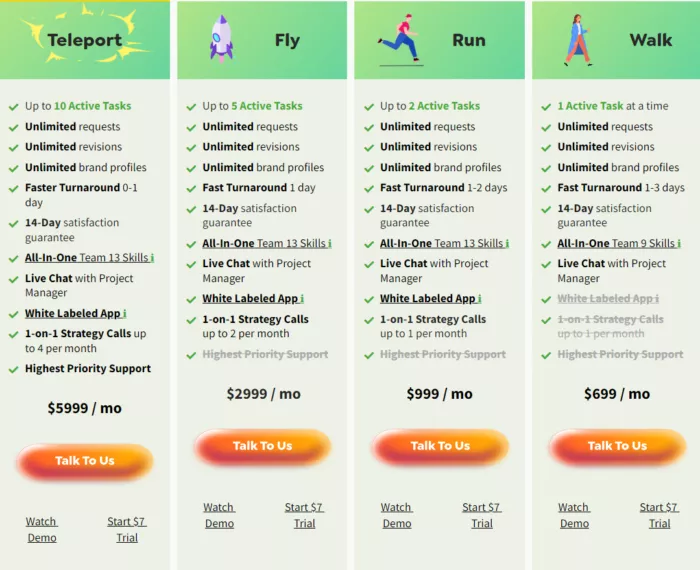Self-Liquidating Offers: The Secret to Infinite Leads For $0
Have you ever heard of a “perpetual motion machine”?
It’s the holy grail for engineers.
Basically, this machine is able to keep on working without any additional input of energy.
Like a Nintendo Switch that never needs to be plugged in…
Or a bike that keeps rolling (even uphill) without ever having to be pedaled… (exactly, like the famous scene from E.T.).

Or a self-liquidating offer.
You see, a self-liquidating offer is a marketing funnel tactic designed to pay for itself while still feeding fresh leads into your pipeline and growing your email list....
Pretty cool, right?
Simply put, a self-liquidating offer immediately monetizes traffic coming into your funnel, completely off-setting the cost invested to acquire that traffic.
So today, I’m going to show you:
- What a self-liquidating offer is and the types of offers there are.
- The 3 key principles of marketing that your self-liquidating offers must follow.
- And how you can bring in zero-cost leads to your funnel with a few examples of self-liquidating offers that do a great job of paying for themselves.
Now let’s start with defining…
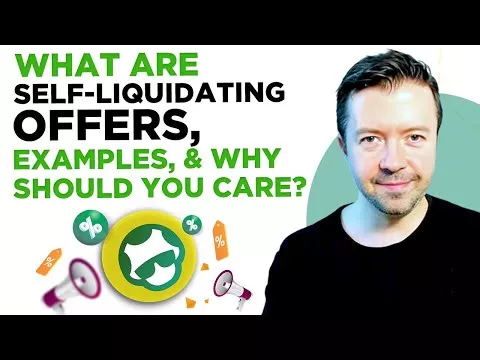
Want to delegate all your marketing and funnel work done—without the headaches of hiring? Download our free guide: 33 Marketing Projects You Can Delegate to Growbo and discover how to save 100+ hours a month, grow faster, and scale without the overhead.
What Is a Self-Liquidating Offer?
A self-liquidating offer is an offer that ends up paying for its own advertising expenses.
It’s a way of offsetting, or completely negating, the costs you have to pay to get that offer out to your customers.
Sounds simple, right?
A self-liquidating offer can be practically anything too.
It can be a lead magnet like an eBook, a guide, a checklist, a collection of recipes, a resource list. Or it can also be a tripwire—whatever you want.
As long as it’s an attractive offer to your target audience, you can make a self-liquidating offer out of it.
What Are the Goals of Your Self-Liquidating Offer?
A self-liquidating offer is only the first step in your sales funnel.
You see, the purpose of your self-liquidating offer is not to bring in loads of dough.
Instead, the purpose it’s to:
- Establish yourself as an authority in the industry that your customers or clients can trust.
- Connect you with leads that become qualified for your product or service after consuming the content in your self-liquidating offers.
- Build your email list so you can continue to nurture leads until they buy.
...All without ever having to lose money on attracting leads.
Now, to make things easier for you, I came up with 2 main types of self-liquidating offers. I call them the “Standalone” and the “Sneak Attack.”
Types of Self-Liquidating Offers
Here are the main types of self-liquidating offers…
#1 Type of Self-Liquidating Offer: The “Standalone” (AKA Tripwire)
The Sandalone type of self-liquidating offer is basically a tripwire.
A tripwire is a low-priced offer that’s meant to build trust with your prospects so you can convert them later on your core offer.
For example, here at Growbo, we have our tripwire Ultimate Swipe File as one of our most successful self-liquidating offers.
After prospects purchase our tripwire, we kind of get them ready to be upsold to our core offers (which are all aligned with “sales funnels”) which are:
Our Sales Funnel Blueprint and…
Our Sales Funnel Diagram Pack.
See how the content of both the Swipe File and the other 2 info products are aligned? They all address the topic of sales funnels.
So our Swipe File helped generate high-quality leads for our core offers above.
Simply put, with your tripwire you start building rapport with your prospects. They take a little sip of the quality of your product or service. And then, once they trust you enough, they come back for more and buy your core offer.
It’s as simple as that.
And what makes a tripwire qualify as a self-liquidating offer, though, is that the revenue generated from it pays for its own advertising costs.
For example, at just $7 a pop, our tripwire isn’t especially profitable on its own (we’ve generated over $13,000 total since its launch).
And this also led to $10,000s of additional dollars because our tripwire triggered additional sales. Many of those customers ended up becoming clients of Growbo who have paid $10,000s.
However, our Swipe File has more than covered its own ad costs.
Now, there are different types of tripwires you can create as your self-liquidating offer.
Just make sure that your tripwire is aligned with your core offer (like how our Swipe File is aligned with our Sales Funnel Diagram Pack and Sales Funnel Blueprint ).
Because if your offers are not aligned and they offer different types of content, those customers who purchased your tripwire, may not be interested in purchasing your core offer because it’s about something completely different.
For example, if your tripwire is an ebook with a compilation of healthy recipes to lose weight, people who buy that won’t be interested in buying afterwards a training course on how to cook fast food-like meals.
That’s where the real money is: in aligning your tripwire with your core offers.
#2 Type of Self-Liquidating Offer: The “Sneak Attack” (AKA Lead Magnet
This type of self-liquidating offer is simply a lead magnet.
A lead magnet is a free offer that lets you capture leads in exchange for their contact information.
Lead magnets are a fantastic way for you to capture leads’ contact info (like their email address) without them having to actually buy a product from you (thus reducing the risk involved on their end).
Because people are risk averse. They don’t feel comfortable buying from a stranger right away.
In fact, one key ingredient in the thousands of sales funnels we’ve created for our clients, is a lead magnet.
This is often the starting point in any high-converting sales funnel as you can see in the diagrams below.
See?

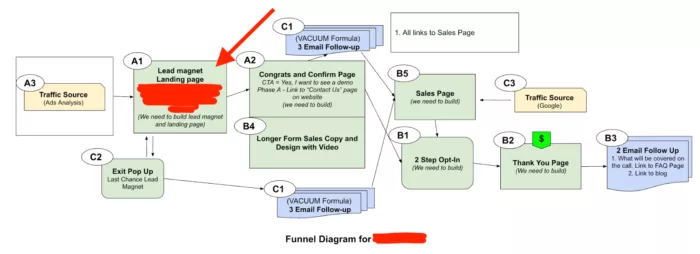
Those are sales funnel diagrams that you can also find in our Sales Funnel Diagram Pack.
And there are plenty of different lead magnets you can use in your funnel to attract your ideal audience. No matter if you have a coaching sales funnel, or eCommerce sales funnel, or local event sales funnel, or SaaS sales funnel.
Now, the thing that makes this “Sneak Attack” (AKA lead magnet) type of self-liquidating offer different is that it cannot pay for its own advertising costs because it’s already free!
But where the self-liquidating part comes in is that later purchases on your core offer are used to offset your advertising costs.
Ok, so now that you know the 2 types of self-liquidating offers, let’s move to a few examples of self-liquidating offers that do a great job paying for themselves.
Examples of Self-Liquidating Offers
These are a few examples of self-liquidating offers I’ve come across with that do a great job of paying for themselves.
And to put your mind at ease, let’s take a look at this one example of a self-liquidating offer.
Example #1 of Self-Liquidating Offers
This is where Mike Dillard comes in.
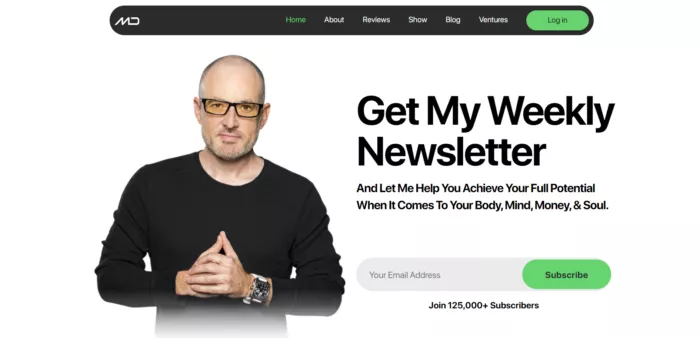
Mike Dillard’s an entrepreneur, podcaster, consultant, business coach… the list goes on.
And his 8-figure empire all started with one tiny yet incredibly powerful self-liquidating offer.
It was called “Magnetic Sponsoring”—a $40 ebook that sold more than $50,000 per month within 3 months.

In fact, the self-liquidating offer is so popular that other businesses have even started using it as their own self-liquidating offer.
Here it is Mike’s ebook being offered by Elite Digital Marketing Pro on their website.
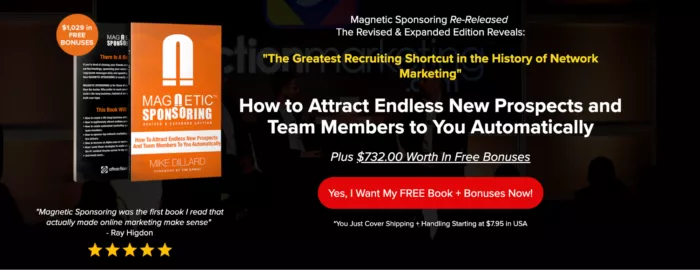
Now, that eBook alone brought in $25MM in revenue. BUT it also took quite a lot of ad spend to achieve those kinds of numbers.
The real win was that Mike Dillard built his reputation as an internet marketing expert.
And because of that reputation, he was able to build a financial education company called “The Elevation Group” with a client base of over 50,000 in 60 different countries.
And with a flagship product with a price tag of almost $2,000 (50,000 clients X $2,000 = $100,000,000), it’s no wonder why Mike Dillard’s self-liquidating offer was such a massive success.
Example #2 of Self-Liquidating Offers
This was our self-liquidating offer here at Growbo not so long ago…
I had created a landing page to sell my ebook Productize & RELAX on how to better “package” your services or products and sell them more efficiently.
But to start driving traffic to that landing page, I had offered people first a free lead magnet.
This lead magnet was like a set of video tutorials and we advertised them on Google or Facebook.
If 5% of the people who had opted in to download the free lead magnet would have ended up later purchasing my ebook (costing me $30 in ad spend for every purchase), if the cost of the ebook was, let’s say $30, then this is an efficient self-liquidating offer because the cost of a future purchase is equal to the ad expenditures. Even though the lead magnet was for free.
Simple, right?
Put another way: let’s say the cost to acquire a lead is $3. But with a self-liquidating offer, even if it's just a tripwire and then an upsell to a course (laddering), then that turns the cost of $3 into something that is immediately profitable.
But just as with the “Standalone” (AKA tripwire) self-liquidating offer, you have to be sure your 2 offers align (both your free lead magnet and core offer).
Our self-liquidating offer worked because we aligned both offers in our funnel (our lead magnet and our ebook).
Remember, alignment means that your offers and landing pages must be consistent with its context. Meaning, if you say “Buy this free, red apple”, you must deliver a free, red apple to your customers. You cannot deliver a $5, green vegetable.
Or put another way, if you’re a fitness coach offering a free training video on how to eat healthier, then your core offer later needs to be about eating healthy too. It cannot be an online course about how to replace your old wiper blades. Because that would NOT make sense at all for your prospects.
See what I mean?
The Law of Alignment is one of the 11 Laws of Sales Funnel Physics. It’s one of the key principles of high conversions that you always, always must follow in your funnel.
Top 3 Reasons Why It’s Worth Testing a Self-Liquidating Offer
You need a self-liquidating offer because they come with a lot of benefits. And, of course, they really do work (as long as you know what you’re doing).
But let’s dive a little deeper into the weeds.
Why exactly is it worth testing a self-liquidating offer?
Reason #1 on Why Self-Liquidating Offers Are Worth Testing: Marketing Costs Are High
First off, marketing costs are on the rise.
Some people are optimistic about the economy and are spending more money. But others think we may enter a recession. So some people are holding on to cash.
According to Statista, global advertising spending is expected to grow by 6% to $874B by the end of 2023.
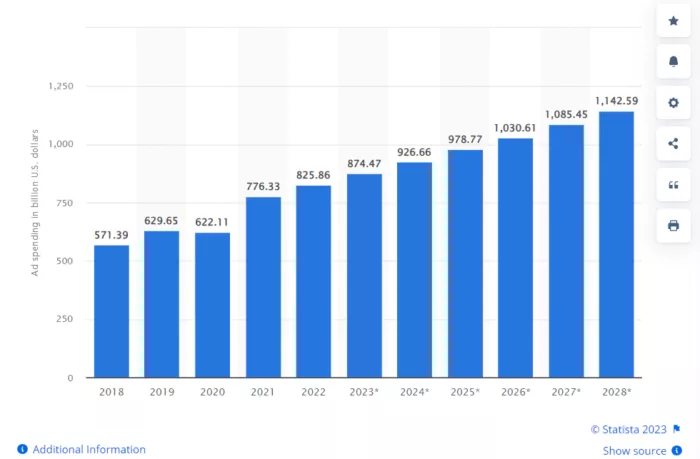
On top of that, Hubspot reports that “adblocking costs advertisers billions of dollars and the losses are growing year on year.”
So whether we like it or not, marketing is getting more expensive.
And that means that business owners and entrepreneurs need to be more strategic about where they’re spending money and more clever with their marketing.
Reason #2 on Why Self-Liquidating Offers Are Worth Testing: They Help Build Your Email List
Self-liquidating offers are a fantastic way to help you build your email list—a vital part of any successful marketing funnel.
Incorporating email marketing into your marketing strategy is still a must these days despite the rise of social media.
In fact, email marketing still remains one of the most effective marketing channels according to LinkedIn.
Why is email marketing so important?
First, of course, there’s the ROI involved.
The Direct Marketing Association (DMA)found that email marketing has an ROI of around 4,200%—or a $42 return on every $1 invested.
Other marketing experts like Hubspot report that it’s closer to 3,800%.
Even still, building up your email list and launching your email sales funnel can be both exceptionally lucrative and pretty easy once you know what you’re doing.
And with a self-liquidating offer, you’re essentially building up that email list for $0 per contact.
What’s not to love?
Reason #3 on Why Self-Liquidating Offers Are Worth Testing: Tripwires & Lead Magnets Really Do Work As Self-Liquidating Offers
And last but certainly not least, tripwires and lead magnets really do work as your self-liquidating offer.
While they differ a bit in terms of the financials (tripwires come at a low cost but lead magnets are free), they both accomplish a similar goal—building trust.
See, not everyone is going to be ready to buy your core offer right off the bat.
In fact, Adobe reports that about 96% of leads aren’t ready to buy when they first see your offer.
That’s why you have to build trust first.
You have to convince people that you actually do offer value. Then and only then will they buy what you have to sell.
Global communications firm Edelman states that 78% of consumers say that “they uncover things that attract them to a brand and drive loyalty after the first purchase.” And they also say that 59% of people are more likely to buy new products when they trust the brand.
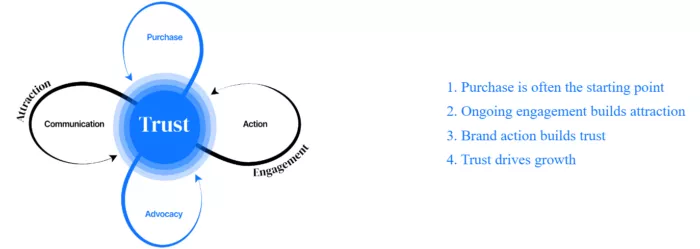
And both lead magnets and tripwires help to establish that ever-important trust with your brand.
And as a result, building a self-liquidating offer for your business is one of the most cost-effective ways to build trust in your audience.
The Core Principles Your Self-Liquidating Offer Needs to Follow
A self-liquidating offer can be a fantastic way for you to mitigate your advertising costs.
But if you want to get the most benefit out of your self-liquidating offers (e.g., direct high-quality leads to your higher price offer or build your email list), you’ve got to follow a few core principles.
Let’s take a look at these principles and how taking them into account will help make your self-liquidating offers even more successful.
#1 Core Principle Your Self-Liquidating Offer Needs to Follow: Your Self-Liquidating Offer Has to Be Aligned with Your Core Offer
I’ve said this before. Your self-liquidating offer has to be aligned with your core offer.
Alignment is all about making sure you’re meeting your prospects’ expectations.
In the case of self-liquidating offers, it’s all about making sure the offer that first attracts prospects (your lead magnet or tripwire) is in the same general niche as your more expensive core offer.
Let me give you an example.
Say you’re browsing through Facebook and all of the sudden you spot an ad for a free cajun-inspired recipe book.
You’ve always loved cajun food ever since you were a kid so you think “Why not?” and you download the cookbook.
There are only a few dishes inside but you love making every single one of them.
Now, a few days after downloading the cookbook, you get an email saying “We hope you enjoyed your cookbook!”
So you give it a click and BAM—you’re hit with an offer for 25% off a consultation with... an accounting firm?
You quickly hit “Unsubscribe”.
What the heck just happened?
Well, the creator of the lead magnet (the cookbook) didn’t align it with their core offer.
Now, if the creator was, for example, selling a larger, more complete cajun recipe book, it’d be much more tightly aligned.
So when you’re creating your self-liquidating offers, be sure to build something that actually relates to your core product or service.
Because otherwise, you may be setting yourself up for failure.
#2 Core Principle Your Self-Liquidating Offer Needs to Follow: It’s Meant to Be the Start of Your Upsell
Upselling is an incredibly useful way to boost your revenue.
Upselling is like upgrading your business’ ability to mine value from your customers. It is an offer on top of an offer that has already been made.
It simply lets you earn higher revenue per client or customer. And that means you don’t have to spend nearly as much time on finding new customers or clients when you do it right.
In fact, research from Price Intelligently found that increasing the monetization of your customers (i.e., boosting how much they spend with you) affects your bottom line more than focusing on customer retention or acquisition.

So, in order to get the most out of your self-liquidating offers by using them as a gateway towards the upsell to your core offer, do not overprice your self-liquidating offers!
If you do, you risk driving off new leads that may have otherwise converted on your other high-ticket offer.
Of course, with your “Sneak Attack” (AKA lead magnet) type of self-liquidating offer, you won’t have to worry about that since it’s going to be free.
But with your “Standalone” self-liquidating offer, you want to keep your prices low, yet not so low that your core offer loses its merit or seems cheap.
Aim for somewhere between $7 and $97.
In fact, we stuck to this principle when creating our own $7 for 7-Day Trial for our monthly subscription.
With this low-priced offer, our clients get to try delegating their digital marketing projects to Growbo for a full 7 days—all for less than the price of a couple cups of coffee.
And if they like what we do during their trial, then they sign up for a monthly plan at a higher ticket price.
In the end, a tiny expenditure (just $7) often leads to $1,000s in recurring revenue.
So again: don’t sweat the low cost of your self-liquidating offers.
The end goal is to build trust, establish authority, and prove to your leads that you have something valuable to offer.
If you want to automatically generate 1,000's of fresh leads every month (without risking $1 on expensive ads), you should check out our Sales Funnel Blueprint. This is your step-by-step, easy-to-follow guide—with checklists, worksheets, and more—to create a sales funnel that converts more leads and more sales for your business.
Conclusion
Want to delegate all your marketing and funnel work done—without the headaches of hiring? Download our free guide: 33 Marketing Projects You Can Delegate to Growbo and discover how to save 100+ hours a month, grow faster, and scale without the overhead.
So there you have it!
You have just learned the magic of the self-liquidating offer.
And along the way, you’ve also learned:
- What a self-liquidating offer is (an offer that ends up paying for its own advertising expenses. It’s a way of offsetting, or completely negating, the costs you have to pay to get that offer out to your customers).
- The 2 different types of self-liquidating offers you can start using today (the “Standalone” (AKA tripwire) and the “Sneak Attack” (AKA lead magnet).
- The 3 top reasons why it’s worth testing a self-liquidating offer:
- Reason #1: Marketing costs are high.
- Reason #2: They can build your email list.
- Reason #3: Tripwires and lead magnets are great ways to build authority with future customers.
- The 2 principles your self-liquidating offers need to follow:
- Principle #1: Your self-liquidating offer has to be aligned with your core offer.
- Principle #2: Your self-liquidating offer is meant to be the start of your upsell
Now, I’ve got to ask you: are you going to go build your own self-liquidating offer for your business?
If so, do you plan on following the steps lined out in this article?
And if you have already created your own self-liquidating offers, do you have any other tips to share with our readers?
If you need some help building out your self-liquidating offers, Growbo can help you. You just need to delegate to us the marketing projects you want us to do for you—and that’s it.
Let me know in the comments below if you already have your self-liquidating offers in your funnel.
Keep Growin’, stay focused,



